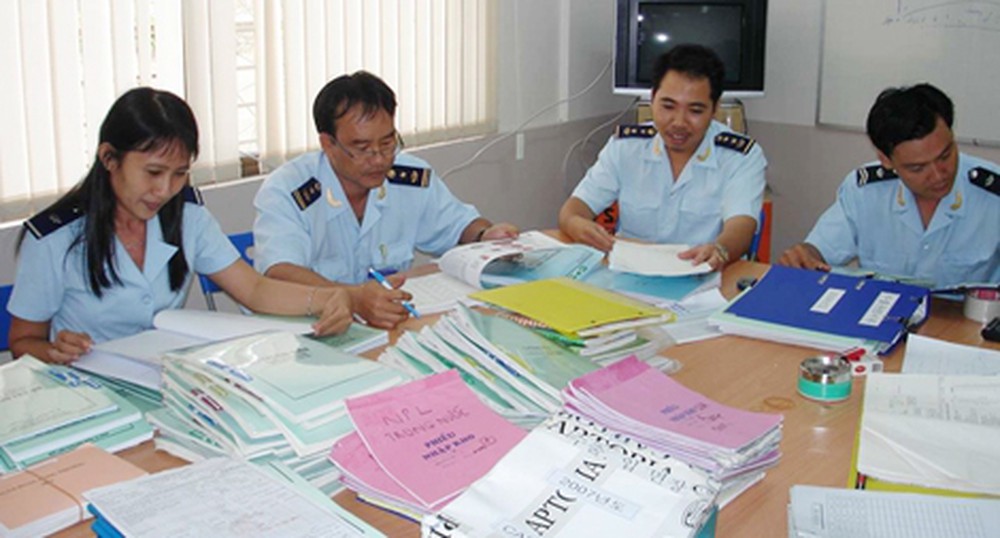Unexpected tax audits that do not require planning in Vietnam
In what cases do unexpected tax audits require no planning? What is the procedure for checking tax records at tax authority headquarters in Vietnam? - Thuy Hai (Dong Nai)

Unexpected tax audits that do not require planning in Vietnam (Internet image)
Regarding this issue, LawNet would like to answer as follows:
1. Unexpected tax audits that do not require planning in Vietnam
Unexpected tax audit cases that do not require planning include:
- Checking taxpayers according to denunciations;
- Inspect taxpayers according to the direction of the Head of the tax authority or according to the direction of the Head of the superior tax authority;
- Check at the request of the taxpayer (divide, split, merge, consolidate, convert business type, dissolve, terminate operations, equitize, invalidate tax code,
moving business location, leading to a change in tax management authority);
- Check before tax refund;
- Check as proposed after checking at the tax office headquarters;
- Other unexpected inspection cases.
(Clause 1.3 of Section III Part II of the Promulgation Process attached to Decision 970/QD-TCT in 2023)
2. Procedure for checking tax records at tax authority headquarters in Vietnam
According to Clause 1.3, Section II, Part II of the Procedure issued together with Decision 970/QD-TCT in 2023, stipulating the order for checking tax records at tax authority headquarters is as follows:
2.1 Check at the tax authority headquarters according to the approved plan.
Step 1: Check tax records:
Based on the approved List of taxpayers inspected at the tax authority headquarters, the Inspection Team inspects high-risk contents according to analysis and assessment when planning:
- Checking risk content to determine the amount of tax payable, the amount of tax to be exempted, the amount of tax to be reduced, the remaining tax amount is deducted for the next period, and the tax amount is refunded according to the comparison method as follows:
+ Compare with the provisions of legal documents on tax.
+ Compare the indicators in the tax declaration with the attached documents (if any).
+ Compare the indicators reflected in the tax declaration and documents attached to the tax declaration (if any) with the tax declaration and documents attached to the tax declaration (if any) of the previous declaration period.
+ Compare with the data of taxpayers with equivalent business scale, the same business lines, and the same registered business items.
+ Compare with information and documents collected from other sources (if any).
- At the end of the inspection, the Tax Inspection Team must comment on the tax dossier according to Form No. 02/QTKT issued with this procedure for the inspected contents:
 |
Mẫu số 02/QTKT |
+ For documents that have not detected signs of risk: make a list of documents that have not detected signs of risk along with a tax document comment form according to Form No. 02/QTKT, report it to the leader of the tax inspection department, and submit it to the Head of the tax authority for approval and retention of the documents.
+ Perform Step 2 below for risky documents.
If the application supports it, print the tax file comments on the application.
Step 2: Process inspection results and issue notices (first time) for tax records at risk:
- Issuing a Decision assigning tasks to check tax records: Leaders of the tax inspection department submit to the Head of the tax agency to issue a Decision assigning tasks to check tax records for tax dossiers at risk and submit them to inspection teams according to form No. 03/QTKT issued with this process.
 |
mẫu số 03/QTKT |
- Based on the Decision on the assignment of inspection tasks, the Tax Inspection Team reports to the Leader of the Tax Inspection Department and submits it to the Head of the Tax Authority to issue a notice (first time) according to Form 01/KTT issued together with Circular 80/2021/TT-BTC, which requires taxpayers to explain and supplement information and documents for risky contents discovered through inspection of tax records.
 |
mẫu 01/KTT |
Tax records are inspected at the tax authority's headquarters according to the assignment and direction of the head of the tax authority and the leader of the tax inspection department, and other high-risk records are inspected as for high-risk cases, following the instructions in Clause 1.2, Clause 1.3 of Section II Part II of Procedure issued with Decision 970/QD-TCT in 2023 to determine the content of the explanation required.
2.2 Check tax records according to the application that supports full inspection
Procedure for checking and selecting high-risk taxpayers using an application that supports complete checking for one type of tax document (Application to check value-added tax records at tax offices and other inspection support applications).
Step 1: Check tax records:
- No later than 25 days after the tax filing deadline, tax officials assigned to tax inspection will use inspection application software to check and make a list of high-risk taxpayers.
- After checking each tax file, the tax official assigned to check the tax must print comments on the tax file according to Form No. 02/QTKT Procedure issued together with Decision 970/QD-TCT in 2023 for high-risk tax documents.
On the basis of high-risk tax records, tax officials are assigned the task of checking taxes, comparing them with tax policies, related records, actual management, etc. If it is deemed that there is no risk or the risk is not high, then record comments and report to the Tax Inspection Department leaders to keep the records and take responsibility for their inspection results.
Step 2: Process the inspection results, determine the case for notification (1st time):
- For tax records with a high total risk score, make a list on the application to check tax records at the tax office headquarters.
- The list of taxpayers checking tax records at tax authority headquarters at this point is independent of the list of taxpayers checking tax records at tax authority headquarters at point a, clause 1.2, Section II, Part II issued together with Decision 970/QD-TCT in 2023.
However, it is necessary to combine with the inspection plan, inspection plan and checklist at the tax office headquarters in other applications to perform, ensuring to avoid duplication in inspection.
Priority order when there are duplicates:
(1) List of inspection plans, inspection plans, inspection topics, and inspections at the taxpayer's headquarters;
(2) Checklist at the tax authority's headquarters at point a, clause 1.3, Section II, Part II of the promulgation process attached to Decision 970/QD-TCT in 2023;
(3) Checklist at the tax authority headquarters at point b, clause 1.3, Section II, Part II, Procedure issued with Decision 970/QD-TCT in 2023.
- The list of taxpayers inspected at the tax authority headquarters must be submitted to the Head of the tax authority for approval by the leader of the tax inspection department according to form No. 01/QTKT along with the Decision assigning the task of checking tax records at the tax agency headquarters to each Tax Inspection Team (form No. 03/QTKT Procedure issued together with Decision 970/QD-TCT in 2023).
 |
mẫu số 01/QTKT |
- Based on the Decision on assignment of inspection tasks, the Tax Inspection Team reports to the Leader of the Tax Inspection Department and submits it to the Head of the Tax Authority to issue a notice (first time) according to form 01/KTT issued together with Circular 80/2021/TT-BTC, it requires taxpayers to explain and supplement information and documents for risky contents discovered through inspection of tax records.
Nguyen Ngoc Que Anh
- Key word:
- Unexpected tax audits
- in Vietnam
- Cases of land rent exemption and reduction under the latest regulations in Vietnam
- Economic infrastructure and social infrastructure system in Thu Duc City, Ho Chi Minh City
- Regulations on ordination with foreign elements in religious organizations in Vietnam
- Increase land compensation prices in Vietnam from January 1, 2026
- Determination of land compensation levels for damage during land requisition process in Vietnam
- Who is permitted to purchase social housing according to latest regulations in Vietnam?
-

- Emergency response and search and rescue organizations ...
- 10:29, 11/09/2024
-

- Handling of the acceptance results of ministerial ...
- 09:30, 11/09/2024
-

- Guidance on unexploded ordnance investigation ...
- 18:30, 09/09/2024
-

- Sources of the National database on construction ...
- 16:37, 09/09/2024
-

- General regulations on the implementation of administrative ...
- 11:30, 09/09/2024
-

- Notable new policies of Vietnam effective as of ...
- 16:26, 11/04/2025
-
.Medium.png)
- Notable documents of Vietnam in the previous week ...
- 16:21, 11/04/2025
-
.Medium.png)
- Notable documents of Vietnam in the previous week ...
- 16:11, 02/04/2025
-
.Medium.png)
- Notable new policies of Vietnam to be effective ...
- 16:04, 02/04/2025
-
.Medium.png)
- Notable new policies of Vietnam effective from ...
- 14:51, 21/03/2025
 Article table of contents
Article table of contents
